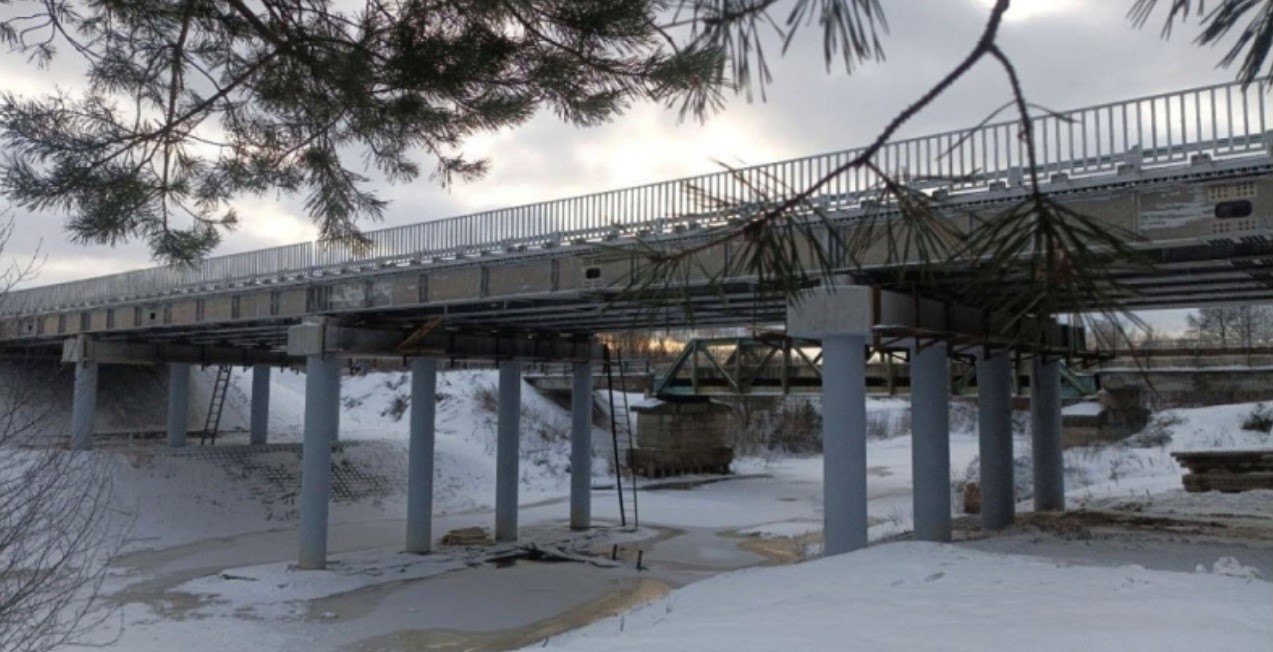

The first aluminium road bridge in Russia - a true innovation for the aluminium and construction industry - has opened for traffic. A 72-metre-long bridge across the Linda River was built in the town of Bor on the Tolokontsevo – Mogiltsy motorway. The spans (beams) and orthotropic plates are entirely made of aluminium alloys – such technologies had never been applied in bridge building in Russia previously. The bridge has been constructed by state order of the Nizhny Novgorod Region Government. The Krasnoyarsk Metallurgical Plant (KraMZ) and Samara Metallurgical Plant (SMZ) provided rolled aluminium and metal structures.

The structure consists of four aluminium spans of 18 meters each. The span beams are made of plates with a width of 25-42 millimetres, 1565Чм aluminium alloy and an orthotropic plate made of 6082T6 aluminium alloy, which can resist high operational loads. The bridge structures were made using the unique friction stir welding method. The span beams were consolidated at the construction site with bolted connections and mounted on pillars; after that, orthotropic plates were installed. The final stage of work included water insulation and asphalt laying.
Evgeny Vasiliev, the Deputy Chair and Head of Transport Infrastructure at the Aluminium Association said, "The Aluminium Association and expert community from across the country have actively participated in implementing this project. A huge amount of work has been done to create regulatory documentation. It should be noted that the first aluminium road bridge on the continent is a completely domestic development. All scientific research was carried out in Russia as well as materials and technologies were made in Russia."
In the process of building an aluminium road bridge, various tests and trials are conducted to determine the dynamics, tension, fire resistance, wear resistance, quality connection, etc.
From the very beginning, the leading scientific and production centres of the country, including the Institute of Light Materials & Technologies (ILM&T), Moscow State University of Civil Engineering (NIU MGSU), and Research Center of Artificial Structures (Bridges), took part in this project.
One of the crucial advantages of aluminium alloy structures is low maintenance costs. Aluminium bridges do not need regular anti-corrosion or special treatment. In addition, such constructions are manufactured at the plant and can be easily delivered to the construction site. Due to their lightweight, no expensive heavy cranes or additional workers are needed at any stage of assembly work.
Irina Kazovskaya, the Chair of the Aluminium Association, said, "Aluminium has a great potential in bridge building: it has a number of indisputable advantages in comparison with other construction materials. Aluminium bridges and bridge kits ensure lower budgetary expenses thanks to their low cost of ownership and long-life cycle. Aluminium and aluminium-based alloys allow the creation of unusual and even futuristic constructions. It is a cost-effective, ecological, and aesthetic solution".
It is worth recalling that it was in the Nizhny Novgorod Region in 2017 that two elevated pedestrian bridges of aluminium were built for the first time in modern Russia.

Today, the Aluminium Association is actively developing transport infrastructure. The number of already built aluminium alloy bridges is increasing every year. Eighteen bridges with aluminium structures have been put into operation. Currently, over 63 bridges using aluminium structures are being designed in Russia.
Responses








